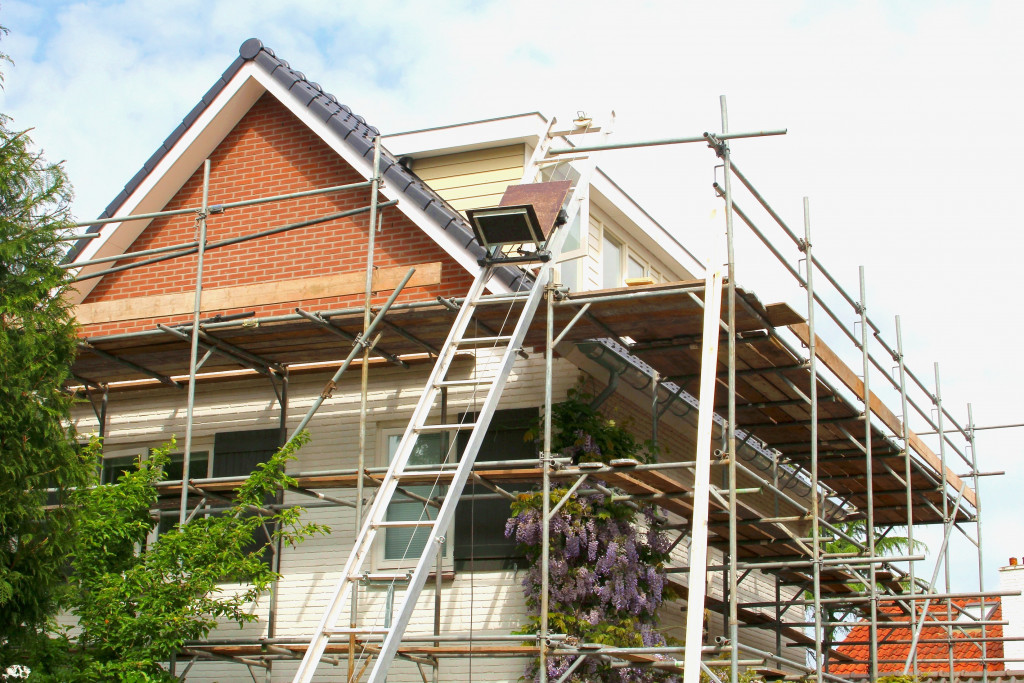- Invest in high-quality insulation such as fiberglass, cellulose, spray foam, or wool for better thermal control.
- Choose efficient windows and doors with Low-E coatings, double or triple panes, and other features to reduce heat transfer.
- Utilize passive solar design techniques like strategically placed windows and energy-absorbing materials.
- Install a programmable thermostat to save energy when you’re away from home and ensure comfort upon your return.
- Upgrade your roof with more energy-efficient materials such as metal or clay tiles and adequate insulation for winter warmth.
When it comes to your home, few things are more important than ensuring that your living space is comfortable and inviting. Whether you’re dealing with scorching summers or icy winters, maintaining the right temperature can significantly impact your daily life.
But how can you create an energy-efficient space that is still warm or cool enough for your liking? The answer lies in the construction and design of your home. In this blog, you will learn about a few construction ideas that can help you achieve better home temperature control.
Invest in high-quality insulation.
One of the most essential factors in maintaining a comfortable temperature in your home is insulation. This material is responsible for keeping heat from escaping during the winter and cool air from leaking out in the summer. There are many kinds of insulation available on the market. Here are the most popular ones you should look into:
Fiberglass.
This type of insulation is made from tiny glass fibers that are designed to trap air. It also provides good soundproofing and can be used on walls, floors, attics, and other areas.
Cellulose.
Another popular material for insulation is cellulose. It’s composed of recycled paper fibers and provides excellent resistance to air and water vapor.
Spray Foam.
Spray foam insulation is a more expensive option, but it’s becoming increasingly popular because of its excellent insulating qualities. It also seals any gaps or cracks in the walls, making your home more energy efficient.
Wool.
Wool is an all-natural insulation material that offers good soundproofing and fire resistance. It’s also known for its excellent thermal control properties.
Investing in high-quality insulation that is appropriate for your climate zone can make a big difference in your energy bills and your overall comfort.
Choose efficient windows and doors.

Another major factor in your home’s temperature control is its doors and windows. These areas of your home are particularly vulnerable to heat transfer, so it’s essential to choose energy-efficient options that will help keep your home at the right temperature year-round. Look for windows and doors that have Low-E coatings, double or triple panes, and other features designed to reduce heat transfer.
Consider the passive solar design.
Passive solar design is an architectural approach that takes advantage of the sun’s natural heat to warm your home in the winter and keep it cooler in the summer. This approach involves strategic window placement, using materials that absorb and store heat, and other design techniques that can minimize your need for artificial heat or air conditioning.
Install a programmable thermostat.
A programmable thermostat is a small investment that can provide a big payout in terms of energy savings and home comfort. These devices allow you to set the temperature in your home to automatically adjust throughout the day based on your schedule and preferences. This means you can save energy when you’re away from home and ensure that you’re comfortable when you’re there.
Upgrade your roof.

Don’t forget about your roof. It’s an essential part of your home that helps regulate the temperature year-round. Consider upgrading to more energy-efficient roofing material, such as metal or clay tiles, that can keep cool air in and hot air out during the summer months.
During the winter, make sure you have adequate insulation up there to prevent warm air from escaping. To make the process easier, employ the help of a professional roofing contractor. They can help you choose the suitable roofing material and design for your home. They can also help maintain the roof, so you don’t have to worry about it for many years.
Optimize your HVAC system.
Finally, don’t forget to optimize your heating and air conditioning system for maximum efficiency and comfort. Schedule regular maintenance for your system to ensure it’s running at peak performance, and consider upgrading to a newer, more efficient model if your current system is old or inefficient.
By making the proper construction decisions and optimizing your HVAC system, you can help maintain a comfortable temperature in your home all year round. Investing in high-quality insulation, choosing energy-efficient windows and doors, considering passive solar design principles, installing a programmable thermostat, and upgrading your roof are all essential for better home temperature control. With these tips in mind, you should be able to create an inviting living space that is both functional and enjoyable.




